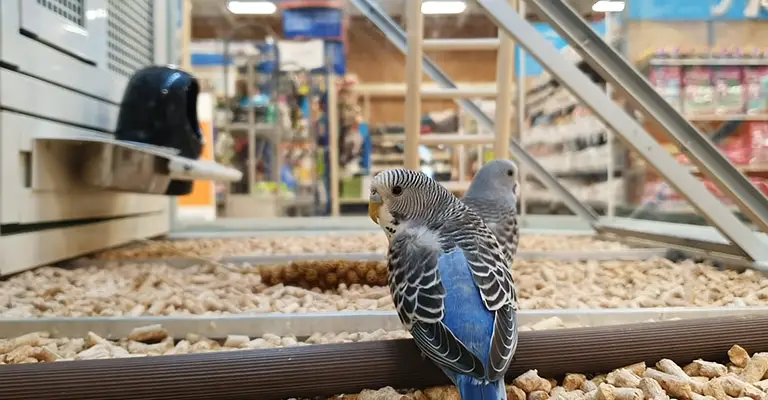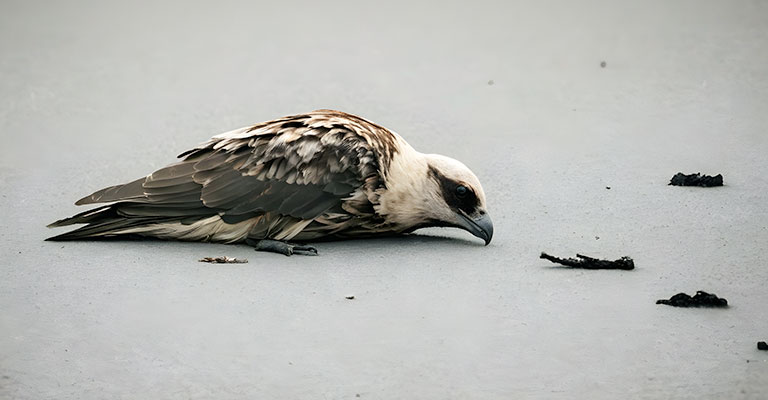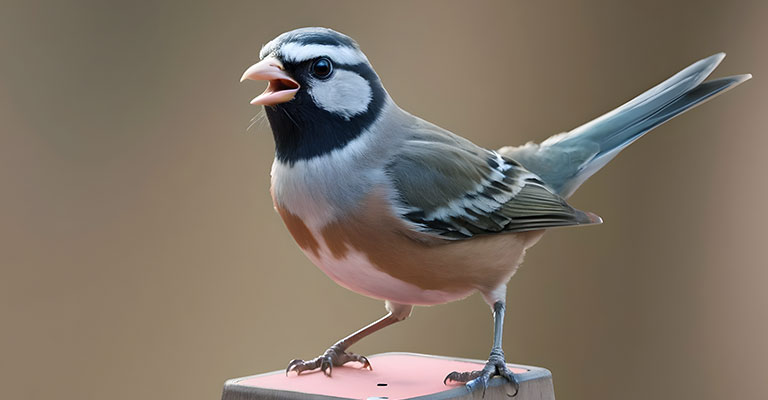Every year, billions of birds travel thousands of miles, navigating treacherous routes and appearing from nowhere. It may be fascinating to see and common but concerning in some cases.
So, why do birds suddenly appear? It is because of their migration patterns. Birds migrate to find food, breeding grounds, and milder climates.
The sudden appearance may also be caused by natural disasters, predators, love for humans, and social behaviours.
But the story of the sudden avian appearance is fascinating and essential to our understanding of the natural world.
In this article, we will dive deeper into the science behind avian migration and uncover the secrets behind this incredible phenomenon.

Why Do Birds Suddenly Appear? Here are the Answers
Here are detailed answers as to why these feathered friends suddenly come from nowhere:
1. Human Activity and Disturbance

Human activities such as urbanization, agriculture, and industrialization can disrupt birds’ natural habitats. The disruption will lead them to seek new areas to live in.
For example, clearing forests for agriculture and urban development can force birds to move to new areas. Similarly, construction and industrial activities can create noise and pollution.
This can be stressful for birds and make it harder for them to live in the area.
2. Disease or Injury

Disease or injury may drive some birds out of their usual range. They may be too weak to compete for resources in their home range.
Likewise, they could also be seeking a more favorable climate for recovery. So, birds may sometimes migrate to escape parasites or pathogens affecting their health.
3. Natural Disasters

Natural disasters such as hurricanes, floods, and wildfires can also suddenly cause birds to appear in new areas. These events can destroy or damage the birds’ natural habitats and cause food shortages. And this makes it impossible for them to stay within their usual range.
4. Climate Change

Climate change has a significant impact on the natural world, including birds. Changes in temperature, precipitation, and other weather patterns can affect the availability of food and suitable habitats for birds.
As a result, birds may be forced to migrate to new areas in search of more favourable conditions.
5. Love for Humans

Some birds may suddenly appear because they have a special affinity for humans. The feathered friends may seek out human-made structures such as buildings, bridges, or statues as nesting sites.
Similarly, some birds may become habituated to humans and actively seek out human-populated areas for food or protection.
6. Startled Reaction

These avian friends may also suddenly appear because they have been startled by a loud noise or other disturbance. For example, birds may fly away from a loud noise, such as fireworks, and end up in an unfamiliar area.
Similarly, birds may be startled by a passing speed train or plane and fly into nearby trees or buildings.
7. Habitat Loss

The sudden appearance of birds in an area may also be caused by habitat loss. As natural habitats such as forests, wetlands, and grasslands are destroyed or altered, birds are forced to find new homes.
8. Release from Captivity

Birds in captivity, such as pet birds or birds in zoos, may be released into the wild for various reasons. These birds may not be able to fend for themselves in the wild. They may appear suddenly in an area looking for food or a safe place to live.
9. Migration

Many bird species migrate seasonally, moving from one area to another to breed or to find more favourable living conditions. As birds migrate, they may pass through a spot where they are not commonly seen. This can lead to the sudden appearance of birds.
10. Breeding

Birds may also suddenly appear as they are attracted to specific areas for breeding purposes. For example, a bird species may migrate to a specific area during breeding. It will do so to find a mate, build a nest and raise its young.
11. To Join Flocks or Congregate in Specific Areas

Some bird species are social animals, and they may suddenly appear in an area to join a flock or congregate with other birds of the same species.
In the case of migratory birds, flocks will often form as they prepare to travel long distances to reach their breeding or wintering grounds.
For non-migratory birds, flocking can be a way to find food or a safe place to roost. For example, starlings will often flock together in the evening to sleep in a safe location while they are not hunting.
12. Protection from Predators

The avian friends may take a flight to evade predators such as hawks, snakes, or domestic cats. This behavior is a survival mechanism, allowing birds to escape predators and increase their chances of survival.
Managing the Impacts of Sudden Bird Appearances
Here are some strategies that can be used to mitigate and coexist with birds safely and sustainably:
1. Use Bird Repellents

These repellents can take many forms, such as visual scares, sound deterrents, and chemical repellents. Visual scares like plastic owls or snakes can scare birds away. However, they may lose their effectiveness as birds become accustomed to them.
Sound deterrents, such as high-pitched noises or bird distress calls, can also scare birds away. Chemical repellents, such as methyl anthranilate, are widely used to repel birds. However, they can be toxic and must be used with caution.
2. Create an Unattractive Environment

Start by removing or reducing the availability of food and shelter. You should take away bird feeders or trim back vegetation. Instal bright lights or use reflective surfaces.
If you have any garbage, try to burn it. Do not eat outdoors; keep your leftovers sealed with stiff paper should you dump them.
3. Avoid Health Hazards

Health concerns associated with birds include transmitting diseases such as avian influenza and salmonellosis. Some of the critical measures that can be taken to avoid this include:
- Proper hygiene and sanitation: Regularly clean and disinfect areas where birds are present. Clean and prevent the accumulation of bird droppings, feathers, and other debris that can harbor pathogens.
- Avoid contact with birds: Avoid holding or handling birds, especially if you have open cuts or sores on your hands. Wash hands thoroughly after coming into contact with birds or their droppings.
FAQs
Read these frequently asked questions for more information regarding birds’ sudden appearance.
No, you should not be concerned if the birds are not disrupting your everyday life or property. If they are migratory birds, they will move from your property within hours. It should only be a concern if the birds are damaging your property and causing disruptions.
The sudden appearance of birds may have different meanings or interpretations in various cultures or spiritual beliefs.
In some cultures, birds are seen as messengers or symbols of particular spiritual or supernatural experiences. However, in most cases, the sudden appearance of birds is a natural occurrence.
Conclusion
The above answers the question, why do birds suddenly appear? These sudden appearances are beautiful and awe-inspiring. However, they can also pose several risks and challenges to both individuals and society as a whole.
Understanding the reasons behind the sudden appearance of birds and taking appropriate actions is essential. This can help us appreciate and coexist with these fascinating creatures in our environment.